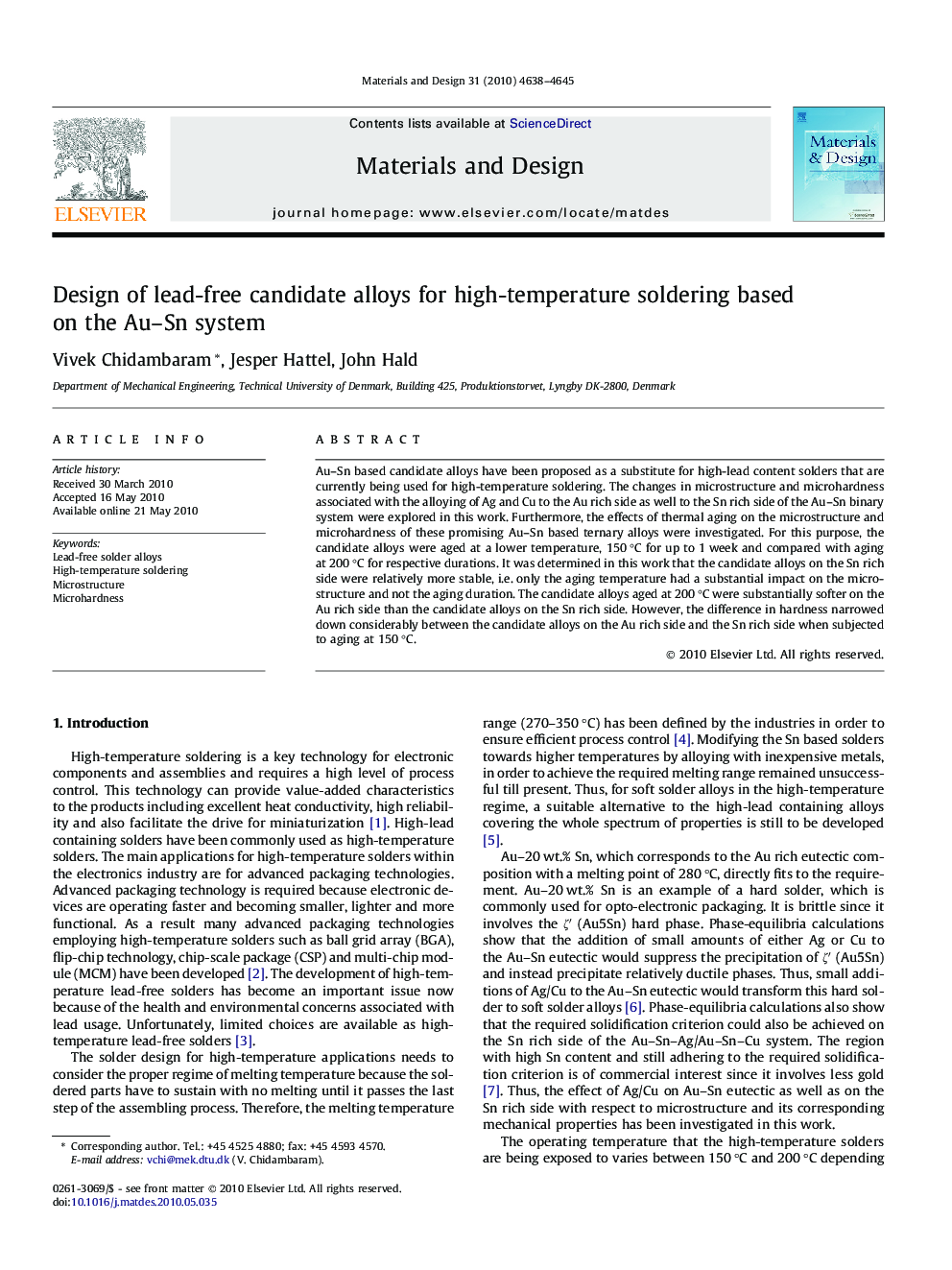| Article ID | Journal | Published Year | Pages | File Type |
|---|---|---|---|---|
| 831754 | Materials & Design (1980-2015) | 2010 | 8 Pages |
Au–Sn based candidate alloys have been proposed as a substitute for high-lead content solders that are currently being used for high-temperature soldering. The changes in microstructure and microhardness associated with the alloying of Ag and Cu to the Au rich side as well to the Sn rich side of the Au–Sn binary system were explored in this work. Furthermore, the effects of thermal aging on the microstructure and microhardness of these promising Au–Sn based ternary alloys were investigated. For this purpose, the candidate alloys were aged at a lower temperature, 150 °C for up to 1 week and compared with aging at 200 °C for respective durations. It was determined in this work that the candidate alloys on the Sn rich side were relatively more stable, i.e. only the aging temperature had a substantial impact on the microstructure and not the aging duration. The candidate alloys aged at 200 °C were substantially softer on the Au rich side than the candidate alloys on the Sn rich side. However, the difference in hardness narrowed down considerably between the candidate alloys on the Au rich side and the Sn rich side when subjected to aging at 150 °C.
